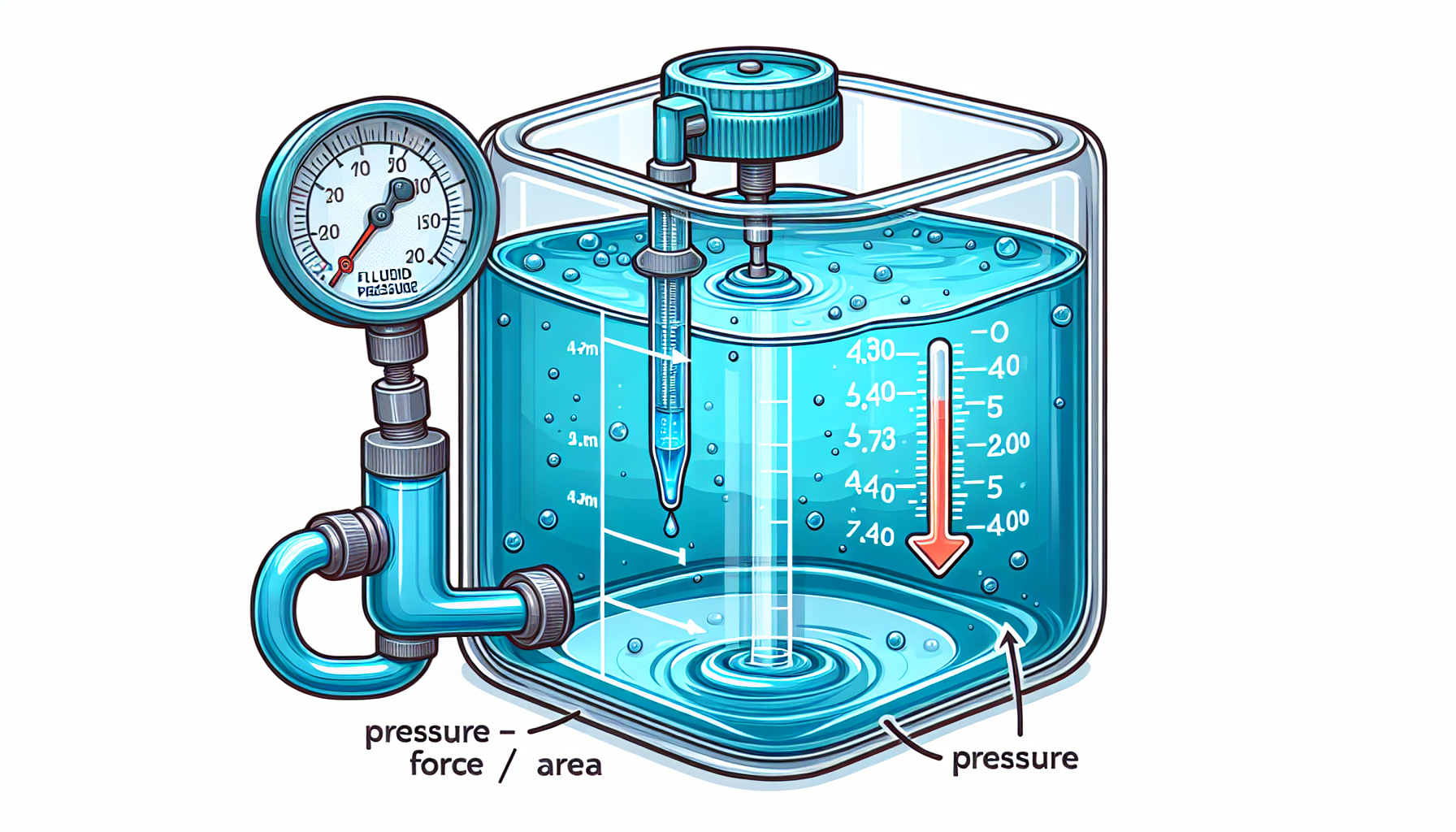
Fluid pressure is a fundamental concept in physics and engineering, essential in various applications ranging from everyday household plumbing to complex industrial processes. But what exactly is fluid pressure? At its core, fluid pressure is the force exerted by a fluid per unit area. This force can be measured in different ways, depending on the context and the type of fluid involved. Understanding how to measure pressure in fluids is crucial for ensuring the proper function and safety of fluid systems.
Basics of Pressure Measurement
Before delving into the devices used for measuring fluid pressure, it’s essential to grasp the basics of pressure measurement itself. Pressure in fluids is typically measured using units such as Pascals (Pa), pounds per square inch (psi), or bars. The choice of unit often depends on the industry and the specific application.
Key Units of Measurement:
- Pascals (Pa): The SI unit for pressure, commonly used in scientific contexts.
- Pounds per Square Inch (psi): Frequently used in the United States for various applications.
- Bars: A metric unit commonly used in meteorology and some industrial settings.
Whether dealing with gases or liquids, accurate pressure measurement is vital for maintaining system integrity and performance.

Types of Pressure Measurement Devices
There are several types of devices designed to measure fluid pressure, each with its unique advantages and applications. Here, we’ll explore some of the most common ones:
Manometers
Manometers are among the simplest and oldest devices for measuring pressure. They typically consist of a U-shaped tube filled with a liquid, such as mercury or water. The difference in liquid levels in the two arms of the tube indicates the pressure difference. Manometers are often used for low-pressure measurements and calibration purposes.
Bourdon Tubes
A bourdon tube is a mechanical device that uses a coiled, hollow tube to measure pressure. As the pressure inside the tube increases, it tends to straighten out, and this movement is translated into a readable dial. Bourdon tubes are widely used in industrial applications due to their robustness and reliability.
Piezoelectric Sensors
Piezoelectric sensors use materials that generate an electric charge when subjected to mechanical stress. These sensors are highly sensitive and can measure dynamic pressure changes accurately. They are commonly used in high-speed applications, such as monitoring combustion in engines or detecting rapid pressure fluctuations in research settings.
Pressure Transducers
Pressure transducers convert pressure into an electrical signal that can be easily read and processed by digital systems. They are highly versatile and can be used in various applications, from automotive systems to medical devices. Pressure transducers offer high precision and can be integrated into automated control systems for real-time monitoring.
Factors Affecting Pressure Measurement Accuracy
Accurate pressure measurement is not just about selecting the right device; several factors can influence the readings obtained. Understanding these factors is crucial for ensuring the reliability of your measurements.
Environmental Factors
Temperature, humidity, and altitude can all affect pressure readings. For example, temperature changes can cause materials to expand or contract, impacting the accuracy of mechanical devices like bourdon tubes. Similarly, altitude changes can affect the density of gases, leading to variations in pressure readings.
Calibration
Regular calibration of pressure measurement devices is essential for maintaining accuracy. Calibration involves comparing the readings from your device to a known standard and adjusting it as needed. Neglecting calibration can lead to significant errors over time, especially in critical applications.
Device Selection
Choosing the right device for your specific application is vital. For instance, a manometer might be suitable for low-pressure applications, but a piezoelectric sensor would be more appropriate for high-speed dynamic measurements. Understanding the strengths and limitations of each device can help you make an informed choice.
Practical Applications
Pressure measurement in fluids has a wide range of practical applications, from industrial to everyday scenarios. Here are a few examples:
Industrial Applications
In industrial settings, accurate pressure measurement is crucial for maintaining the safety and efficiency of processes like chemical manufacturing, oil refining, and power generation. Pressure transducers and bourdon tubes are often used in these environments to monitor and control pressure in real-time.
Automotive Systems
In automotive systems, pressure sensors are used to monitor tire pressure, engine performance, and fuel systems. Accurate pressure measurement ensures the safety and efficiency of the vehicle, preventing issues like tire blowouts and engine malfunctions.
Medical Devices
In the medical field, pressure measurement is essential for various applications, such as monitoring blood pressure and respiratory functions.
Everyday Use
Even in everyday life, pressure measurement plays a crucial role. From checking the pressure in your car tires to ensuring your home heating system operates efficiently, understanding fluid pressure and its measurement has practical benefits.
Conclusion
Understanding how to measure pressure in fluids is essential for anyone working with fluid systems, whether in industrial settings or everyday applications. By grasping the basics of pressure measurement, exploring different types of measurement devices, and considering factors affecting accuracy, you can ensure reliable and precise pressure readings. Accurate pressure measurement not only enhances system performance but also ensures safety and efficiency.

Leave a Reply